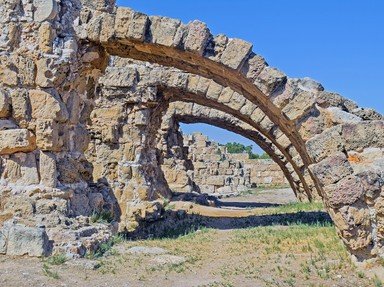Quiz Answer Key and Fun Facts
1. Which of these ruins is NOT located in Africa?
2. This American site, in Illinois, is the home of the largest earthen pyramid in the US.
3. Cadbury, the Neolithic hill fort in Somerset, England, has often been assumed to be the site of what mythical place?
4. In Tivoli in Italy, you can see the ruins of this Roman Emperor's villa, built around 125 AD.
5. Everyone knows that the Italian city of Pompeii was buried under the ash of Mt. Vesuvius when the volcano erupted in 79 AD. But do you know the name of the town next door that was also buried?
6. In which city would you find the ruins of Pompey's Pillar and a Roman amphitheatre?
7. In what Canadian province would you find Anse au Meadow, the ruins of a Viking settlement?
8. The ruins of Thebes, located in central Greece, include a temple to this god.
9. At Birka, on an island in Malaren Lake in this country, are 1,200 Viking graves.
10. On what island would you find the Neolithic village of Skara Brae?
11. In which Egyptian city could you visit the Temple of Amon?
12. This city, now in ruins, was the capital of the Chimu Empire and the largest city of ancient Peru.
13. The ruins of this former capital of Ceylon include temples and monasteries.
14. According to legend, King Arthur was born at the site of the ruins of this Cornish castle.
15. On the Greek island of Kos in the Aegean is what is believed to be the oldest tree in Europe, under which this famous man taught his students.
Source: Author
bullymom
This quiz was reviewed by FunTrivia editor
bloomsby before going online.
Any errors found in FunTrivia content are routinely corrected through our feedback system.

